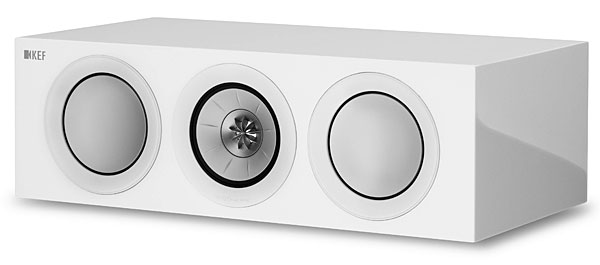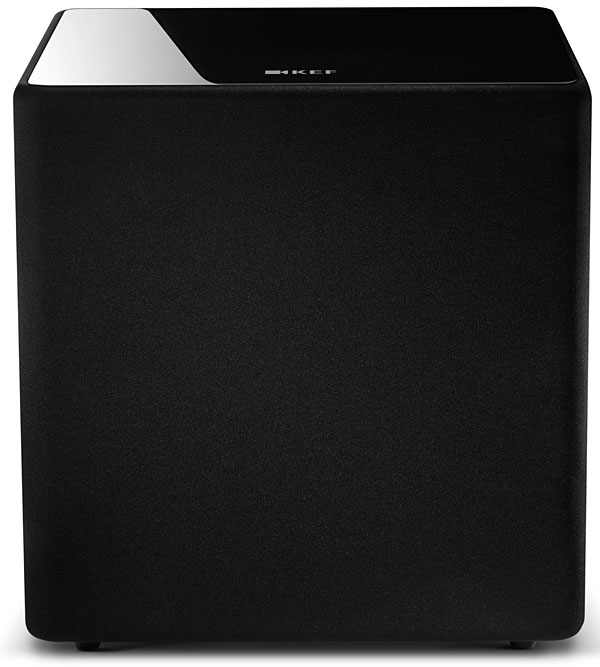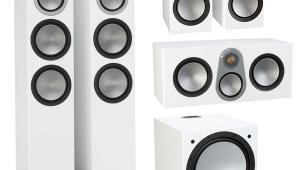As usual Tom, you maximized the potential of the Speakers with Pre-Amp and Amps that frankly are above the pay grade of the speakers being reviewed.
I also have a challenging open concept room (17 x 19 with cathedral ceiling, semi opened to kitchen and formal sitting room).
As in your case, clean driving power is essential, but so are larger speakers key to fill the space.
Unfortunately, in your listening space (as for sure in mine) the KEF R series are a couple of notches below the grade.
I'm sure that the R series would fair well in a more traditional 15' X 12' enclosed listening room with 8' flat ceiling.
As for my listening room, I have three subs (10" and two 8").
Yeah, I know, two larger subs would be much better. I'm lucky that my wife of 37 years allows me the three smaller subs. After all is her house, I just pay the bills.
KEF R5 Surround Speaker System Review

AT A GLANCE
Plus
Sweet, clean highs
Superb dialogue clarity
Detailed but not aggressive sound
Minus
Slightly limited treble diffusion
R3s make for pricey surrounds
THE VERDICT
With a sweet balance on music and potent, but not aggressive, manner with movies, KEF’s R-series system delivers all-around outstanding performance.
KEF'S R Series speakers have long occupied the middle range of the British manufacturer's offerings. While the previous R Series was starting to get a bit long in the tooth, I found the performance of those speakers to be superb, having reviewed the last generation R700 for Sound & Vision's sister publication Stereophile in 2014.
KEF designs feature a 12th-generation coincident "Uni-Q" driver. Other manu- facturers like Tannoy and ELAC employ coincident drivers as well, but KEF, which has spent 25 years optimizing Uni-Q, may be best known for them. With this design, the tweeter is typically mounted at the throat of the midrange cone, with the driver radiating uniformly in all directions without the usual comb-filtering interference common to multi-way speakers with separately situated drivers. By using the surrounding cone as a wave guide, the dispersions of the tweeter and midrange can be better matched at the crossover frequency.
KEF claims that the new line includes 1,043 changes from the preceding R Series. The updates include the damping of small structural gaps in the drivers, such as between the tweeter and the midrange cone, to reduce distortion. Internal bracing in the cabinets has been further stiffened. Also, the trim around the drivers, which KEF calls a Shadow Flare, has been sculpted to minimize cabinet-edge diffraction. The paper- based cones of the bass drivers are now skinned in aluminum to provide higher excursion, and new, flexible ports are said by KEF to reduce resonances.
The Lineup
The R Series system I received for review consisted of the R5 floorstanding towers ($2,800/ pair), a set of standmounted R3s ($2,000/pair) for surrounds, the R2c center speaker ($1,200), and a quartet of small, wedge- shaped R8a speakers ($1,400/ pair) for Dolby Atmos duty.

The R8a has spaced slots in the rear for a side-wall setup, but is mainly intended to provide upward-firing, ceiling- reflected Atmos sound. Each R Series model apart from the R8a employs a 5-inch Uni-Q midrange-treble coincident driver together with one or more separate woofers, making them true 3-way designs. (The two-way R8a features a 5.25" Uni-Q driver.)
The R Series comes in striking gloss black, gloss white, and walnut finishes, with the drivers tinted to match. The magnetically-attached grilles have a very thin frame and are covered with perforated microfiber cloth. I found the grilles to have a marginal effect on the treble, so I opted not to use them.
The dual pair of speaker terminals on the R5s and R3s can be connected internally by turning a knob on the terminal plate if single-wiring is used (as it was here). Unlike the usual external metal straps, the link is invisible, so make sure to un-turn and disconnect them if you're attempting a bi-wire or, in particular, a bi-amp setup. KEF also provides adjustable foam bungs to fully or partially block the two rear bass ports.
The R5s come with outriggers for enhanced stability. Spikes are provided, though I didn't use them.

For a subwoofer I chose KEF's Kube12b ($700), a model that previously appeared in our June 2018 review of the company's Q350 speaker system (available online at soundandvision.com.) The Kube12b is a relatively compact design providing basic features such as level, two-position phase, line- and speaker-level inputs, low-pass crossover, and three fixed EQ settings, but no programmable room EQ or wireless connection options. I requested two of them to help fill my large listening space, and even the pair turned out to be just barely enough.
The KEF R-series (and the Kube12b sub) is designed in the U.K. and manufactured in China.
Setup
My home has a bass-challenging, open-concept floor plan that more than triples the 16 x 21-foot section carved out for my home theater setup. The non-flat ceiling height is an estimated average of 9 feet. I set up the R5s on the 16-foot dimension, about 3.5-feet out from the closest walls, roughly 9 feet apart, 11 feet from the listening position, and toed-in toward the center seat. The center speaker was placed on a low stand, while the four R8a Atmos speakers sat atop the front R5s and rear R3 surrounds.
My review system included Marantz UD7007 and Oppo UDP-203 disc players, a Marantz AV8805 preamp- processor, and a Parasound Halo A 52+ five-channel amplifier. Two channels of an Outlaw 750 amp were tapped for the surrounds, while a seven-channel Outlaw 7220 amp was used to drive the Atmos channels.

It's All About Da Bass
For this review, I used both Kube12b subwoofers to get the results reported for movies and music. I had anticipated the contribution of the Kube12b subs when I chose the R5s—the smallest tower speakers in the new R Series. Why pay for the extra bass offered by the larger R Series towers when you'll be rolling them off at around 80 Hz? Listened to without the subs, the bass put out by the R5s was impressively tight and detailed and might well shine in a small room. In mine, however, the R5's bass was simply too lightweight.
After some initial trials, I ended up stacking the two KEF Kube12b subs together against the room's left side wall. This improved performance by combining output capability but sacrificed any benefit that separately located subs would offer for multiple seating positions.
A frequent issue in my room, one that varies with the speakers being used, is a rise in response centered around 150 Hz. This was audible with the KEFs, thickening the sound and muddying inner detail. To correct the problem, I at first tried equalization but eventually decided against it and instead inserted the optional port plugs on the speakers and reduced the bass control on the Marantz pre-pro. Together, these tweaks greatly reduced the upper bass bump I had been hearing. I then adjusted the subwoofer level to better match up the upper and lower bass. While a 110 Hz crossover setting measured best (I used the Omnimic measuring system from Parts Express to confirm my results), an 80Hz setting sounded better, so that's what I went with. I also used a +1dB treble setting on the Marantz, which added a bit more top-end air to the sound.
Music Performance
When listening to the biggest Kodo-style Taiko drums to more modest kick drums, the KEF system's bass was consistently rewarding. The drums that open Toto's "I Will Remember" made me sit up and take notice. And while the sound of pipe organ didn't rattle the room, that's an almost impossible feat in my space. What the paired Kube12bs did provide on the audiophile warhorse Pictures at an Exhibition, as transcribed for organ and performed by Jean Guillou on the Great Organ of the Tonhalle Zürich, was a degree of scale and weight that would satisfy the pipe dreams of all but the most extreme organ fans.
- Log in or register to post comments


Why has S&V stopped supplying measurements for speaker reviews?



























































